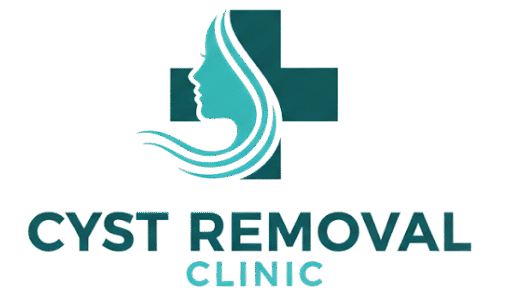Cyst removal is a simple, minor procedure — but just like any skin surgery, healing takes time. The good news is that recovery is usually quick and straightforward.
Most patients at Cyst Removal Clinic London heal within two to three weeks, though the exact timeline depends on the cyst’s size, location, and how well aftercare instructions are followed.
The day of your procedure
Immediately after the cyst is removed, the area will be:
- Numb from local anaesthetic
- Covered with a small dressing
- Slightly red or swollen
You’ll be able to go home straight away and continue your usual routine — though it’s best to rest for the day and avoid heavy exercise or stretching the area.
Once the anaesthetic wears off (usually after one to two hours), you may feel mild soreness or tightness. This is easily managed with paracetamol or ibuprofen if needed.
The first 48 hours
The first couple of days are focused on protecting the wound.
- Keep the dressing dry and intact for the first 24–48 hours.
- Avoid touching or picking the area.
- Some light spotting or clear fluid on the dressing is normal.
If the cyst was on the face, neck, or scalp, mild swelling may appear within the first 24 hours — especially if you’ve been bending or lying flat. This will settle naturally.
Days 3–7: early healing phase
By day three, the incision will start to close and form a thin protective layer. You can usually remove or replace the dressing (as advised by your doctor) and gently clean the area with mild soap and water.
At this stage:
- Redness and tenderness gradually reduce.
- Itchiness or tightness is common — a normal part of healing.
- Any bruising begins to fade.
If your stitches are dissolvable, they will start to soften and disappear. If removable, they’re typically taken out around 7–10 days after the procedure.
You can usually return to work and normal daily activities during this period, provided you keep the wound clean and avoid friction or excessive movement.
Weeks 2–3: skin recovery and scar formation
By the second week, most wounds are sealed and safe to leave uncovered. The area may still appear pink, slightly raised, or firm to touch — this is normal.
The skin continues to repair itself beneath the surface, forming new collagen and tissue to strengthen the scar.
Typical progress by week 3:
- The wound looks smooth and dry.
- Tenderness has mostly resolved.
- You can resume gentle exercise.
You can now begin using a fragrance-free moisturiser or silicone-based scar gel to keep the area supple and promote even healing.
Months 1–3: scar maturation phase
Even after the wound has closed, healing continues under the skin. The scar gradually softens and lightens in colour.
- Initially, scars may appear pink or red.
- Over time, they fade to match your natural skin tone.
- By three months, most scars are flat, pale, and barely noticeable.
For best cosmetic results, it’s important to:
- Protect the area from sun exposure (use SPF 30+ or cover it).
- Avoid scrubbing or exfoliating the scar until fully healed.
- Continue moisturising daily.
This phase is where your final result takes shape — and patience pays off.
Factors that affect healing time
While most patients heal within 2–3 weeks, several factors can influence the process:
1. Size and depth of the cyst
Larger or deeper cysts naturally take longer to heal than small, superficial ones.
2. Location
Areas that move or stretch frequently (back, shoulders, jawline) heal more slowly than still areas (scalp, forearm).
3. Type of procedure
- Minimal excision or punch excision wounds close in 5–10 days.
- Complete surgical excision may take 2–3 weeks for full closure.
4. Infection or inflammation
If the cyst was previously infected or required drainage, healing may take longer due to tissue irritation.
5. Individual factors
Age, skin type, general health, and lifestyle (e.g. smoking, diabetes, nutrition) all affect wound repair speed.
Tips for a smooth recovery
Following your aftercare plan closely will make healing faster and cleaner.
1. Keep the wound clean and dry
For the first few days, this prevents infection and helps the edges seal neatly.
2. Avoid unnecessary movement or friction
Stretching the skin too early can widen the scar.
3. Eat well and stay hydrated
Protein, vitamins A and C, and zinc all support healthy tissue repair.
4. Don’t pick scabs
Let them fall away naturally — premature removal can delay healing and increase scarring.
5. Follow your follow-up schedule
Your doctor will check healing and remove stitches at the right time. Early review ensures any concerns are caught and treated promptly.
What’s normal and what’s not
Normal healing signs:
- Mild redness, itching, or tightness
- Slight lumpiness under the scar (scar tissue)
- Temporary numbness near the incision
Contact your clinic if you notice:
- Increasing redness or swelling after a few days
- Yellow discharge or odour (possible infection)
- Persistent bleeding or wound reopening
- Fever or feeling unwell
Early attention helps resolve these issues quickly.
The long-term result
For most patients, the skin looks and feels normal again within a few weeks. Scars continue to fade for up to a year, especially when protected from sunlight and well cared for.
Once healed, recurrence is very unlikely if the cyst capsule was completely removed. You can safely wash, shave, and exercise normally once your doctor confirms full healing.
Summary
- Day 1–2: Keep the dressing dry.
- Days 3–7: Early healing; mild redness normal.
- Week 2–3: Wound sealed, scar forming.
- Months 1–3: Scar softens and fades.
By following your doctor’s advice and caring for your skin, healing is quick — and the final result is clean, smooth, and permanent.

